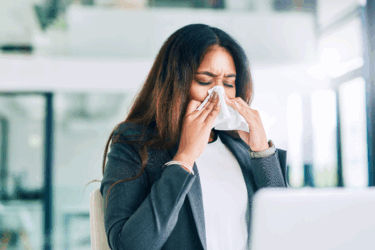Being a parent is probably the toughest job you’ll ever have, and handling your kids’ sports injuries is the icing on the cake. Right then and there, when you witness the fall, bump or bruise, your mind jumps ahead – do we go to the ER? Ice it and wait it out? A lot of this depends on the situation of course.
Jordan Ryan, MD, Family Medicine physician at The Christ Hospital Health Network, says that the bottom line is, if something doesn’t seem right, your best bet is just go to the ER.
“It’s never worth risking your child’s well-being,” he continues. “However, if you have a good relationship with your child’s pediatrician or family medicine doctor, we can often manage minor injuries in our office and save you a trip to the ER.”
As a parent, we know our kids better than anyone else, and we know a life-threatening situation when we see one. So remember to go with your gut and trust your instincts. If it doesn’t seem life-threatening, take the situation into your hands and protect the injured area (keep weight off it, wear a sling, etc) and then call your doctor for some more guidance, says Ryan. Some obvious signs that your kid’s injury means going to the emergency room include their refusal to use or move the extremity in question, says Remzi Sipahi, physician at the Division of Sports Medicine at Cincinnati Children’s Hospital Medical Center.
“For example, if a child with an ankle or foot injury is unable to walk a few steps then they should be evaluated for a possible fracture,” says Sipahi.
Others to look out for are head injuries, bleeding, heart or lung problems. In this case, get help right away.
Kids Sports Injuries
Kids are kids and this is one of the reasons they are prone to injury, in addition to being involved with activities and sports. However, kids who are involved in a variety of sports rather than just one do have a better chance at dodging injuries. Why? A variety of activities actually helps them build up more strength and coordination, says Ryan. However,
remember that too much can cause issues, too. The right balance is key.
“Sometimes playing sports can cause pain,” he continues. “The most common injuries I see are overuse injuries. These usually occur because a child is doing one activity too much. Because children are still growing, it puts them at greater risk of overuse injuries than adults.”
Common injuries include rotator cuff injuries in swimming; elbow injuries in throwing sports; and patellar tendon injuries in bruises; fractures; ligament sprains and muscle strains.
“Stress fractures and growth plate damage are also very common so pay attention to consistent complaints of pain in bones or joints,” Ryan continues.
Overuse is the most important to pay attention to here – those are the injuries that are often overlooked, according to Sipahi. Overuse injuries happen when kids are pushed to play multiple sports at once, or when they are in the same sport year-round, he continues. As a way of prevention, do your best to find the right balance with your kids’ activities and allow breaks and free play in between.
THAT Kid
Is your kid “that kid” that seems to be injury-prone or you know a kid who is? It’s not just coincidence – there are some reasons behind this.
It is a given that the more risky sports and activities your kids are exposed to (contact sports such as football, wrestling, mountain biking, etc.) the more likely they are to get injured. There are also those kids who may have attention problems, play more aggressively, have a connective tissue disorder or just bad luck, says Ryan, and this could be a reason why they are just that kid. However, just because that kid seems to be more injury-prone than others doesn’t mean he should give up on sports.
“My best advice would be to know the risks but have fun,” he continues. “Don’t avoid participating just because you’re worried about injuries.”
Growth and development can play a role here, too, adds Sipahi.
“Our children are constantly adapting to their growing bodies, and trying to navigate sports during this time can be very challenging at times and can lead to more injuries,” he continues. “Lastly, I would say that active kids have injury risks. Working on motor skill development and appropriate fitness for the activity helps reduce injury risk.”
Remain Calm
When your kids take a fall, the best thing you can do for them is to stay calm and listen. Kids react to our reactions, so if mom freaks out, they will freak out, says Ryan.
“The best thing you can do for your kids is spend time with them and listen to them. The more you do that, the more you’ll be able to trust yourself to take care of them the way they need,” he continues.
While you can’t prevent your kids from getting hurt, there are ways to prevent it from happening. Your job is to create a safe environment for your kids to explore, have fun, and grow! Ways to do this include:
- Sign up for swim lessons
- Wear a helmet when riding a bike
- Get regular physicals
- Wear the correct protective gear for sports
- Sign kids up for a variety of activities and sports
- Eat healthy, drink water and exercise regularly (ages 3 – 5 years need to be active throughout the day; ages 6 – 17 need to be active for 60 minutes every day). Source: Centers for Disease Control and Prevention





